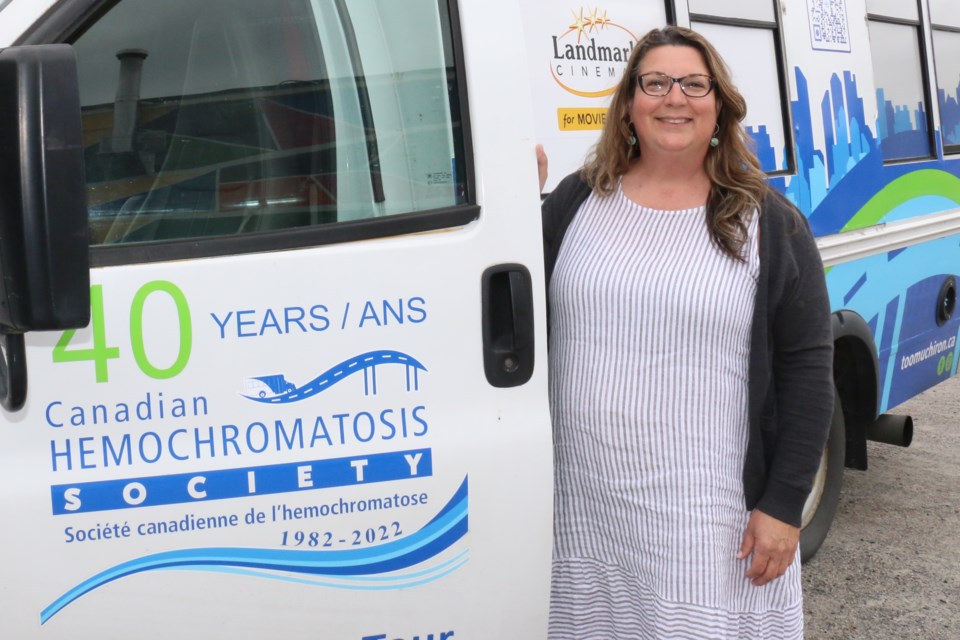There is a little known medical disorder that puts one in 300 Canadians at risk, but very few of us know about it or how serious it can be.
That's why Liz Charyna was talking to Sudbury residents Friday to let people know about hemochromatosis (HE-moh CROW-muh TOE-sis).
Charyna, a Vancouver woman with the Canadian Hemochromatosis Society is helping to educate Canadians and raise awareness by driving her short Chevy bus across the country. She parked the van near some local coffee shops and spoke to passersby.
"So hereditary hemochromatosis is too much iron in your body," she explained.
Having iron in your body is a natural thing and most of us are able to absorb it from our diet (red meats, beans, legumes, broccoli, spinach) and then eliminate it. Some people are born with a mutation of the HFE gene, that might allow iron to accumulate in the body, Charyna said. She added that this affects people whose ancestral families are from northern Europe.
"And so it keeps collecting iron even when you don't need it. So Canadians should be concerned if they are of Northern European descent because it especially is predominant among English, Irish, Scottish, French Scandinavian people," she said.
Charnya added that other ethnicities are affected as well because in the past century, Europeans have traveled throughout the world.
The other concern said Charnya is that the accumulation of iron happens so slowly that many people fail to notice it and it can manifest itself in other ways with other medical conditions such as arthritis, adult-onset brittle diabetes and unexplained congestive heart failure.
The society website said one in every 300 Canadians is at risk of having the disorder.
Charnya said anyone suspecting they have the disorder can be tested for it by asking their doctor. Charnya said blood screening for the HFE gene does not normally occur unless a physician requests it.
If a person screens positive, the treatment is simple, Charnya said.
The primary treatment consists of the removal of blood (like a blood donation, only more frequent) at regular intervals until iron levels return to normal. Once normal iron levels are re-established, they can be maintained by periodic blood removal (two to six times a year depending on the individual). During this maintenance phase, if eligible, blood can be donated through the Canadian Blood Services (CBS). Treatment will prevent damage that would have been caused by iron overload, and is ongoing for life, said Charnya.
She also advises anyone who is concerned they might have the disorder, to check the national website toomuchiron.ca, which has several resources to help people understand the disorder, explore treatment options and seek support from others.
Charnya said the Canadian Hemochromatosis Society is a non-profit organization and can always use financial support from Canadians. She added that the group also has social media links on Facebook and Instagram and invited supporters to check out those platforms.
Charyna will be traveling all the way to Newfoundland by August and then is expected to return home to Vancouver.
